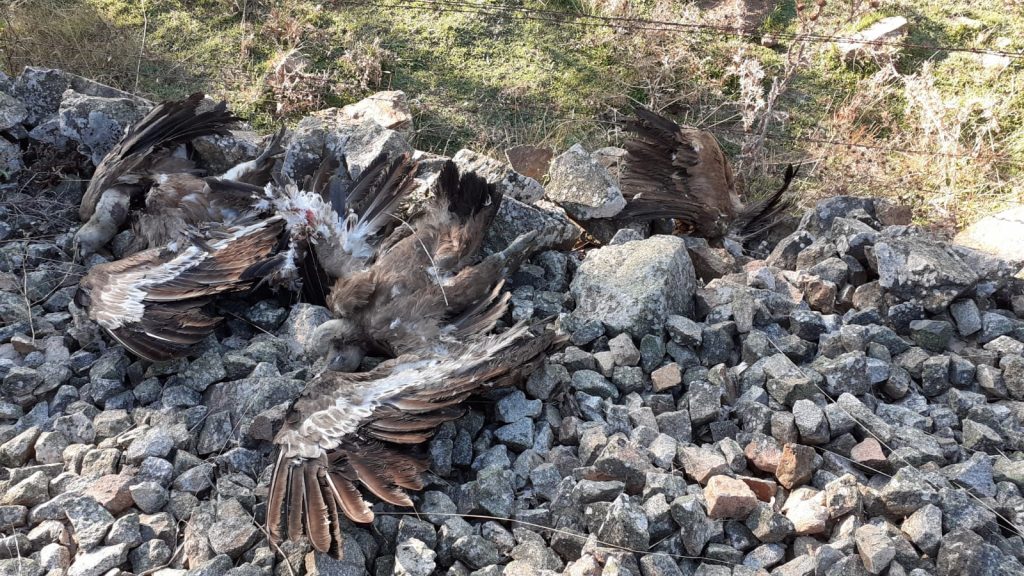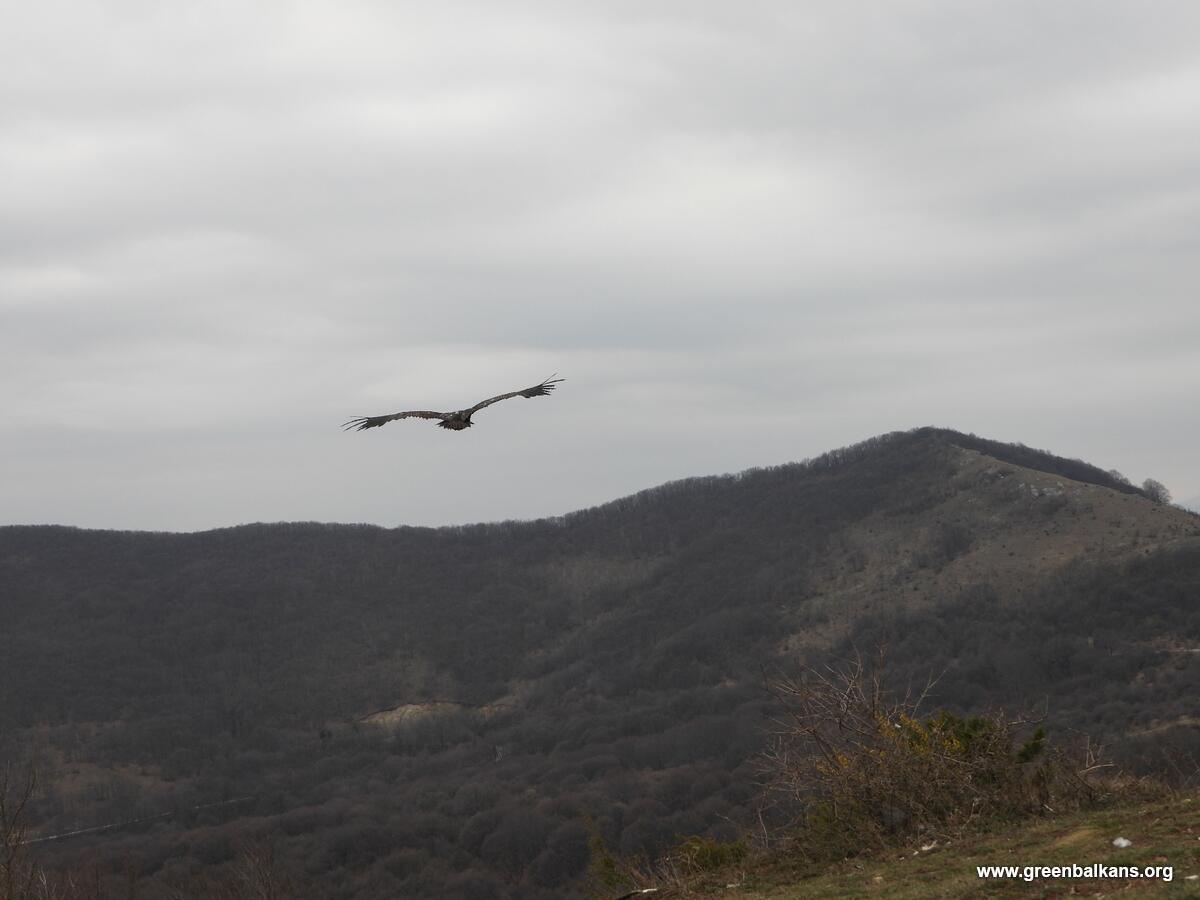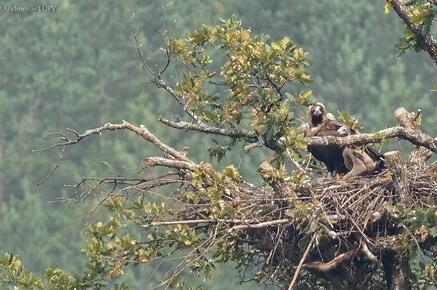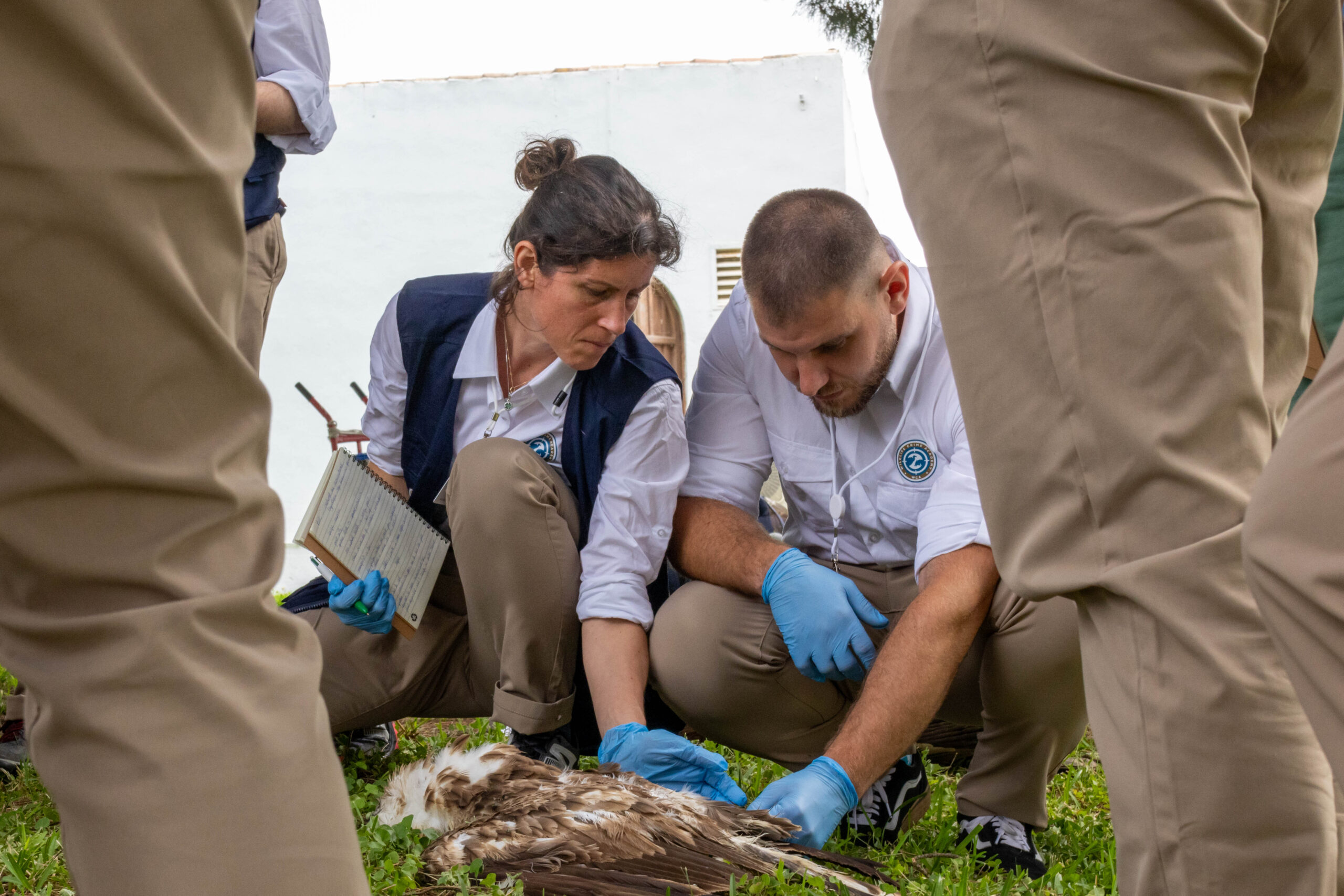After the recent mass-poisoning event in Israel, we are sad to report more vulture mortality caused by anthropogenic factors, highlighting the growing conflict between transport infrastructure and bird conservation in Spain.
Train collision causes mass vulture mortality – carcasses quickly discovered thanks to GPS tracking

On Monday 25 October, a train killed six Griffon Vultures while they were feeding on a cow close to the railway in Avila, Spain. These birds were tracked by researchers from several Spanish institutions including the National Museum of National Sciences in Madrid, Donana Biological Station and Pablo de Olavide University in Sevilla. The aim of this project is to better understand the movements of Griffon Vultures in Spain.
Environmental rangers from Castilla-y-Leon were able to collect and examine swiftly the carcasses. “They found and removed a GPS device that hopefully, will be reused on another vulture within the same project” tweeted Juan Manuel Pérez Garcia, a researcher from the University Miguel Hernández at Elche, Spain.
Once again, this case shows how the analysis of movement data can help detect mortality events in the wild and has thus important implications for wildlife management.
A major collision with an Airbus A4350 and a Cinereous Vulture in Madrid airport
Last week has also saw another mediatized collision in Spain involving a Cinereous Vulture that died due to the incident. This individual hit an Iberia aircraft just before landing at the Barajas airport in Madrid, on Wednesday, 27 October. This collision did not result in any human fatalities.
An article by Arredondo et al. (2021) showed that even though there are thousands of plane and bird collisions occurring every year in Europe, only 12 were serious enough between 2000 and 2018 to bring down aircrafts, and involved only light aircraft, never airliners. In these incidents, only three species were involved, including the Griffon Vulture and the Cinereous Vulture, and all took place in Spain. Sadly, six of them resulted in human fatalities.
Analysis of GPS data showed that bird flight altitudes overlapped the legal flight altitude limit set for general aviation. Although unlikely, these fatal bird strikes highlight the need for increased mitigation of the risks between aviation and large soaring birds. The authors highlighted that air authorities and pilots should use available movement data to modify the flight ceiling and refine risk maps.
Transport infrastructure and bird conservation: It’s time for action
Unfortunately, collisions with anthropogenic infrastructures are an increasing threat to vultures inhabiting European landscapes. These last decades, the transport infrastructure network has experienced exponential growth across Europe. In parallel, vulture and stork populations have recovered in many areas. Both trends explain the growing conflict between transport infrastructure and bird conservation. Therefore, new policies are needed to mitigate this conflict in order to improve safety and buffer against the impact of human travel on biodiversity.
Vulture Mortality Database
In 2017, the VCF started a new three-year venture with the MAVA Foundation in collaboration with BirdLife, IUCN, WWF, and EuroNatur to “document vulture population’s demography and trends – baseline data, causes of mortality and indicators towards the priority species outcome”. This project aims to widen the knowledge on the 4 European vulture species through specific monitoring programmes and gather already existing information from several sources. In addition to other actions, the project includes the establishment of a European database on mortality data for the four vulture species in Europe and the Mediterranean basin. This will be used as a tool of easy access and usage, which will give us a better overview of local and temporal threats and the real situation of European populations, which will, in turn, help us carry out more accurate conservation actions. Any vulture mortalities caused by transport infrastructure or any other causes should be sent to science@4vultures.org.
Source:
Arrondo E, García-Alfonso M, Blas J, et al. Use of avian GPS tracking to mitigate human fatalities from bird strikes caused by large soaring birds. J Appl Ecol. 2021;58:1411–1420.





